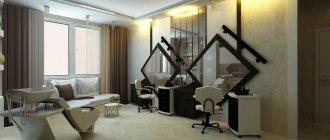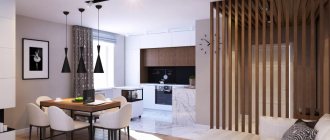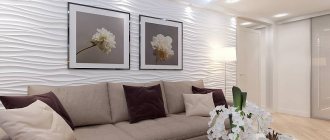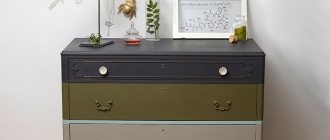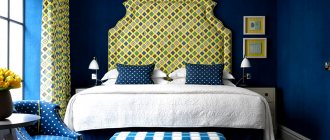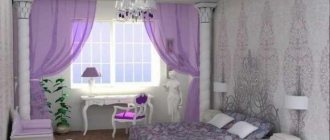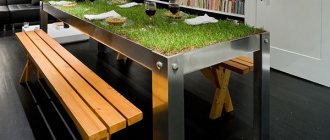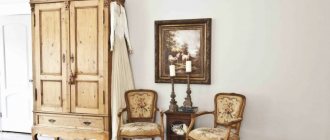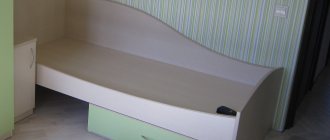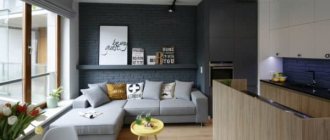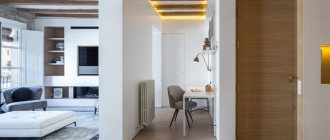Object design is a utilitarian art designed to transform everyday things into masterpieces. To create a design object, the author-designer needs to collaborate with a design engineer, or have such skills himself. Before you bring your idea to life, you need to answer some questions:
- For what? – what this item will be used for.
- Of what? – which materials can be used to create it and which cannot.
- How it works? – the principle of operation of the object and the list of its unchanged structural elements.
Andrea Colombo and Linda Assandri - Glamor Beetle Armchair
The designer has at his disposal the form, structure, materials and dimensions. He can do whatever he wants with them, as long as the item retains its functional properties, is convenient to use and safe. Even such conditions allow the designer to create something new, completely changing the idea of a familiar object.
Cabinet made of OSB panels
Designer tableware from the Seletti brand
Decorative plate – abstraction
Łukasz Sidmok and Andrej Saperzynski - Volkswagen Beetle sofa
Developments that have made history
Some construction designers managed to come up with something that will be talked about for a very long time, something that changed the world, and not just added to the collection of works.
Suitcase chair
John Bock Stool
Peacock chair by Dror for Cappellini
Shell shell
Beautiful marble effect
Heavy marble stone is not suitable for every apartment. And hand-made marble is a light effect of a noble texture.
Collect:
- nail polish, 2-3 colors + transparent;
- transparent glasses;
- capacity;
- acetone;
- toothpicks;
- masking tape.
Limit the painting area with tape. Next, get ready to act very quickly, as the varnish hardens quickly. Pour water into a container, open the polishes and drop a little of each, one on top of the other. Use a toothpick to pass over the stain 5-6 times to blend the shades. Lower part of the glass towards it with the place prepared for applying the pattern.
Once the varnish has set to the surface, pull it out carefully but firmly. Wait until the object dries and fix what happened with transparent enamel, and wipe off what is unnecessary with acetone. This way you can put together a whole set!
Console chair (1967)
Verner Panton was not an exemplary student either at the Academy or at Arne Jacobson's studio. He was distracted from the educational process, from the tasks assigned to him by his teachers. Instead, he was absorbed in his developments and studying the properties of materials (polypropylene, glass, plexiglass, plastic, foam rubber and others). In the 50s, he managed to create a chair that was previously difficult to imagine: it was in the shape of an inverted cone. But this was not the limit. Werner set out to make a chair that floats in the air. This is how the project of a cantilever chair appeared, in which there were no back legs, and balance was maintained by expanding the base at the front. The project appeared in 1960, but for 7 long years he had to look for a furniture company that would agree to produce it.
Music wall
Decorating the interior with objects that are far from the word design emphasizes the originality of thinking of the owner of the room.
You will need:
- music sheets A4, 30-35 pcs.;
- coffee, boiling water;
- double sided tape;
- scissors;
- ladder.
Take the old collection as a basis. Or print sheet music from the Internet, making sure there are no logos. First you need to “age” 6-8 sheets. Brew 2 tsp. coffee in a large container, fold the notes, arrange coffee beans for individual spots. After 5-10 minutes, remove two sheets and iron through gauze. Take out two more sheets after 6-7 minutes and iron them. Do the same with the third batch. You should get 3 shades of brown. The time is approximate and depends on the sensitivity of the paper. Old sheet music will absorb color faster than from a new printer pack. Make markings on the wall, taking into account additional accessories in the form of frames, etc. Attach the notes with tape, placing it crosswise along the height of the paper. Turn on Mozart, it seems he will come in handy!
Modular furniture (1949)
Paul McCobb dreamed of becoming an artist from an early age, and eventually became a famous designer. He pioneered the development of a system of modular furniture components for mass production. His simple and sophisticated design line was produced until the 70s and was in every fashion house of that time. In addition, he was involved in the design of radios and televisions.
Jay Watson - table with heat sensitive paint
Royal Style Wall Mounted Jewelry Holder
The idea of boudoir design combines practicality and luxury.
Involved:
- wooden or plastic frame in Rococo style;
- glue;
- lace;
- scissors;
- drill.
Choose 2-3 types of lace of different widths, keeping in mind that there should be at least 4 cm of empty space between the strips. Cut to frame size. Carefully attach to the inside of the frame using superglue. If you have a construction stapler, you can use it. The place where the holder will hang should be accessible at hand level, and if there are small children or curious animals in the house, fenced off from their sudden interest. Install the fasteners using a drill. Attach the frame by hanging earrings, beads, and chains on ribbons in a chaotic manner.
Anglepoise lamp or the so-called “architect's lamp” (1932)
George Carwardine was an ordinary engineer and was mainly involved in the design of automobile parts. But since 1930, he became a free inventor and began to develop his own projects. As a result, in 1932 he managed to make an adjustable table lamp - Anglepoise (“angle” and “balance/equilibrium/balance”). The design made it possible to change the lighting angle to a more convenient one. In 1937, designer Jacob Jacobsen bought a license for it and began producing it in Scandinavia under the name Luxo. It was this lamp that became the symbol of Pixar. the Anglepoise brand was created , which not long ago re-released the lamp, increasing its size tenfold. Giant lamps are used as floor lamps and street lamps.
Anglepoise Giant lamp
How to choose the best product design specialist for your interior?
If you want to surround yourself with original interior items and unusual furniture, you should seek help from a product design master. In this case, you can be sure that your new furniture will be unusual, but at the same time convenient to use and easy to care for. Interior items ordered according to your individual project can combine a wide variety of elements: engraving, laser cutting, 3D, milling and much more. When hiring a specialist for your project, there are several important points to take into account:
- Read reviews from previous clients
- View the artists' portfolios to get an idea of the trends and styles they follow.
- Compare the work and prices of several professionals
- When choosing the design of new furniture, make sure that it matches the style of other interior items in your apartment
- Try to define as precisely as possible what you want to see as the final product and explain this to the master in as much detail as possible
Browse the best designers and custom furniture makers on Houzz.com: read reviews from previous clients, evaluate designer portfolios, find project pricing and discounts, and easily connect with your favorite furniture design firms and craftsmen.
Frameless furniture (1960)
Cesare Paolini, Franco Teodoro and Piero Gatti were able to come up with the most comfortable chair - the bean bag chair. There is nothing complicated in the design - a spherical or pear-shaped bag filled with foamed polystyrene, buckwheat or any other filler, and a top cover. Modern designers often experiment with this model: they select fillers, materials for the covers, and change the shape a little - sometimes they will make it like a boxing glove, sometimes like a strawberry, sometimes like a soccer ball.
Silk lamps by Jean-Marie Massaud
Ross Lovegrove
One of the most sought-after industrial designers, despite his age (58 years). Probably because he never stops learning something new. Every day he reads scientific and technical literature. When starting to create a new project, he studies this subject perfectly. Lovegrove's design doesn't focus on color or materials - it's all about form. Some of his most memorable works are a table in the form of a clover and a lamp in the form of drops.
Bone Chair by Lovegrove
Clover table Ross Lovegrove
Drop Lamp – Ross Lovegrove
Maxim Shcherbakov — @maxim_scherbakov
Maxim Shcherbakov is a product and interior designer originally from St. Petersburg. He has two specialized educations - painting and architecture.
Coffee table Sputnik-5
Plantscape Project
Chair P-11
Commodus Pridanoe
Maxim founded the Plan-S23 and Supaform studios, which specialize in product and interior design. In his projects he tries to maintain a balance between sculpture, painting, design and architecture.
Together with designer Lesha Galkin, co-founder of Plan-S23, Maxim created the PROKK project. PROKK are multifunctional wall panels with integrated shelves, niches, switches and sockets. In their work, the designers were inspired by Soviet constructivism and retrofuturism from the era of Dieter Rams.
In 2014, Maxim participated in the Milan Design Week (Salone del Mobile), the main furniture exhibition in Europe as part of the IZBA project.
Rubika panel
Lisbon panel
Rubika panel
Okama panel
Philippe Starck
A true design guru. It used to be that if you don't know his name, you don't know anything about design. It all started after a private higher school of design in Paris. Stark did everything he could - chandeliers, watches, bicycles, interiors, architecture and much more. Everything worked out for him with a bang, despite the fact that he treated many projects with irony. His famous works are the Lois Ghost chair made of polycarbonate, a Gothic chandelier with black crystal, a fancy juicer, a table lamp in the form of a machine gun and other equally original things.
Chair Lois Ghost
Video description
In the video, the designer reveals where you can purchase decorative items:
And one more important circumstance. Each house is a personal project. It should reflect the status of the owner and emphasize his individuality. Things selected taking into account the character and habits of its inhabitants are the highest aerobatics in the art of design. If the family likes to gather around the TV in the evening, there should be a large number of pillows. If household members are passionate about reading printed books, the house should have interesting shelves and unusual book holders. When a housewife is proud of fresh flowers grown with her own hands, she should have a single set of vases and stands. The collector must have an exhibition space. There is no need to save on the design of such trifles.
Unusual limiter for books Source claroshop.com
Maarten Baas
Outrageous furniture designer from the Design Academy of Eindhoven (Netherlands). His student projects also gained fame and were put into production. His most interesting collections are Smoke , Sculpt and Clay Furniture .
The first is furniture from the Rococo period that was fired. Maarten specially charred it and then covered it with epoxy resin. The result is a kind of gloomy old-world charm. The Sculpt collection includes wooden furniture made according to his sketches. The trick is that the sketches were not drawings, they were absolutely curvilinear and as a result the products turned out as if they were melting in the sun. The Clay Furniture collection is interesting in the way furniture is processed: synthetic clay is applied to a metal frame and covered with colorful varnish.
Various definitions of the concept “DESIGN”
Design (English design) - project, development, drawing, drawing; design, drawing, drafting. Design (from the English design - plan, project) is a special type of activity (type of design), in which an object, in addition to its main purpose, is given the qualities of beauty and increased functionality, ergonomics and a clear social orientation. Design is a creative activity whose purpose is to determine the formal qualities of objects produced by industry. These qualities of form relate not only to appearance, but mainly to structural and functional connections that transform the system into a holistic unity from the point of view of both the manufacturer and the consumer. Design seeks to embrace all aspects of the human environment, which is determined by industrial production (definition given by ICSID - the international organization of design). Design is the practice of designing useful and beautiful things. Design is a method of identifying and presenting the essence of a product being created and put on the market. Design is the appearance and quality of workmanship of an object or thing. Design is the theory and practice of “decency” of the disordered objective world, its harmonization. Design is a design method taking into account limited resources. Design is the corporate style of the product. Design - increasing the aesthetic value of objects and technical objects. Design - taking into account the human factor in engineering design. Design is artistic construction. Design is a systematic approach to designing various things. Design is part of marketing, a way of promoting a product to the market. Design is a type of artistic creativity. Design is a materialized, material way of communication between the designer (design artist) and the consumer (buyer, user). Design - design as a process of awareness of activity. Design is an innovative activity, due to its problematic nature, and due to the constant novelty of the task, the integration of various types of activities is required. Design is a creative activity, the purpose of which is to create a harmonious subject environment that most fully satisfies the material and spiritual needs of a person. Design is a field of design activity that covers the theory and practice of creating a subject environment in all spheres of human life. Design is a specific field of activity for the development (design) of a subject-spatial environment (in general and its components), as well as life situations in order to give the design results high consumer properties, aesthetic qualities, optimization and harmonization of their interaction with man and society. Design is a combination of utility and beauty... Design is a synthesis of art and technology... Design is a universal (total) design... Design is the humanization (humanization) of technology... Design is the representation of consumer interests in production... Design is a sign of the third civilization... Design is the design of material objects and life situations based on the layout method with the necessary use of scientific data in order to impart aesthetic qualities to the design results and optimize their interaction with man and society. This determines the presence of social consequences inherent in design, which also manifest themselves in the formation of personality.
The term “design” can refer to the project itself, the design process and its result – the completed project.
Design is a conscious and intuitive effort to solve a problem that can never have a single correct solution. The result is an infinite number of solutions, with some solutions being more correct than others. The correctness of decisions depends on the embedded semantic meaning.
Design (English) - derived from the Italian “disegno”, means not only a drawing or drawing, but also complex things - the entire area of \u200b\u200bthe artist’s work. Design - English project, image, plan, idea, unusualness, non-standard activity.
Design , as a phenomenon that combines science, art and technology, has a number of features similar to the features of all three components. It is this unique combination and integrity of these features that is unique and unique to design.
— Functionality – how useful, informative, and functional the selected object is. The method for solving design problems is the layout method. - Aesthetics - in many cases, designers are primarily tasked with changing and improving appearance, rather than technical improvements. This is technology's price for betrothal to beauty. — Innovation — do not confuse or replace the concepts of design and styling. Changing the color of an item is not all. I would like to see “cerebral” searches in each object, in each - the desire for perfection. - Subjective criterion - individual assessment of the quality of novelty, wit, unexpectedness of decisions and approaches to things, objects and situations (at the level of liking - not liking)
All of these and probably other existing definitions, in principle, reflect the essence of design, although none of them is complete or absolutely correct. Moreover, there is no such definition and cannot exist, since every thinking person brings his own idea to it.
Technology. Grade 10. Section “Fundamentals of artistic design of products” N.V. Voronov “Design. Russian version". – M., 2000.
Allesandro Mendini
Italian avant-garde designer, representative of the radical movement. All his works are in bright colors, not without enthusiasm and complex lines. His collections are a clash of modernity and classics. The most popular projects are the Kandinsky sofa and the Proust chair.
Armchair Proust
Sofa Kandinsky
Piero Fornasetti
In fact, he is not so much an object maker as a decorator, the so-called “one-person designer”. The opera diva Lina Cavalieri became the muse for his work. It was her images in black and white that decorative plates, chairs and vases were decorated with. At this time, mainly only vases are produced, and then only in limited editions.
Decorative plate by Piero Fornasetti
